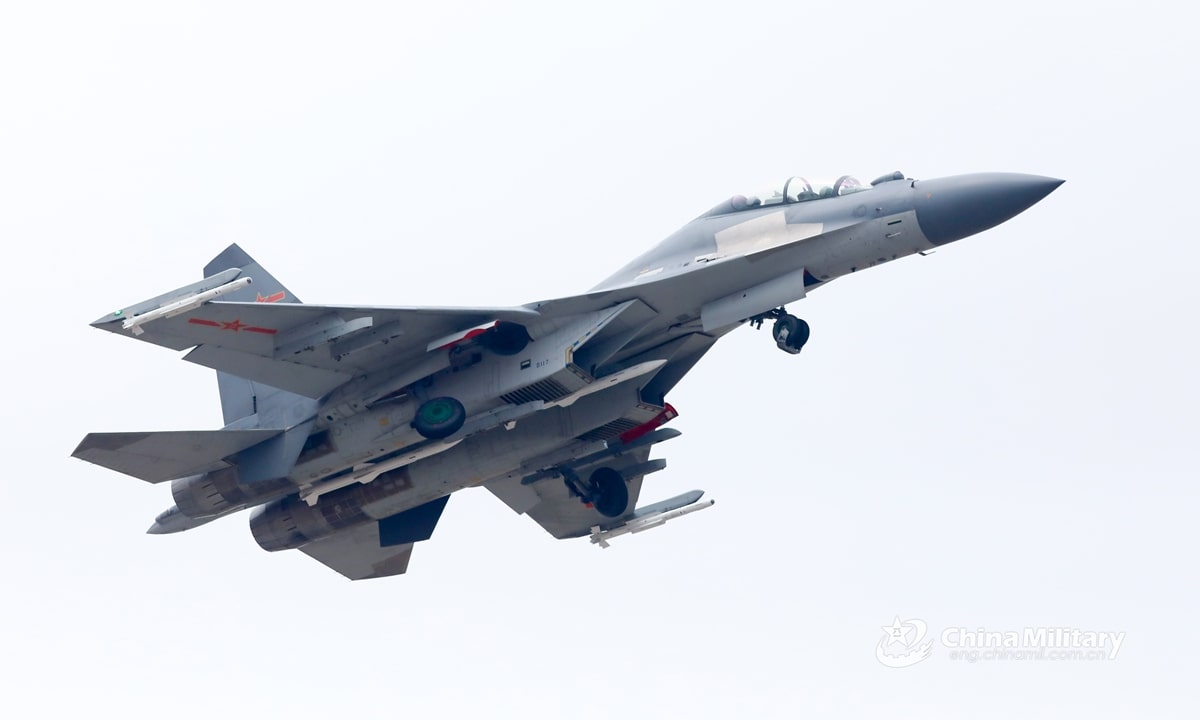China’s J-16 is a multi-role, twin-engine, tandem-seat, strike fighter aircraft. The fighter jet is based on Sukhoi Su-30 aircraft of Russian origin.
According to one of the J-16 pilots, it is much superior and flawless to other aircraft of its category including the Russian Su-30. Global Times reported.
The J-16 jet is used by the Chinese People Liberation Army as an air superiority fighter. It is deployed by the PLA on the Western borders to defend the country’s air space. According to a military analyst, the aircraft is “one of China’s core elements of air defense forces”.
Follow us on Google News to get the latest defense news and analysis
Shenyang J-16:
The J-16 fighter jet is developed by the Chinese Shenyang Aircraft Corporation (SAC). The company built both civilian and military aircraft for China and it is one of the oldest aircraft manufacturers in the country.
In 1999, China purchased the Su-30 MKK and Su-30MK2 jets from Russia as air superiority strike fighters. China has then developed the J-16, an improved version of the Su-30 to integrate its own subsystems and adding compatibility with China’s weapons.
The Shenyang J-16 now uses a Chinese-made AESA radar. The fighter jet is powered by the Shenyang WS-10A engine. In 2019, Chinese state media has reported the use of radar-absorbent paint on the aircraft to reduce its Radar Cross-section (RCS).
The fighter jet has a maximum speed of Mach 2+. The new variant of the aircraft, the J-16D also uses the Electronic Warfare (EW) pods and Infrared Search and Track (IRST) system.
Weapon systems include the 30mm cannon. The J-16 has a total of 12 external hardpoints. It can carry air-to-air, air-to-surface, and anti-ship missiles. It can also carry guided bombs and anti-radiation missiles.
J-16 vs Su-30:
According to Chinese analysts, the J-16 is better in terms of performance and weapon systems than its Russian origin Sukhoi Su-30 aircraft.
According to a flying instructor of PLA’s Northern Theater Command, Wong Songxi said during an interview with CCTV, “In terms of performance, the J-16 is superior to all types of aircraft I have flown. Speaking of the control capacity of the aircraft, the J-16 is a 3.5 generation plane with huge breakthroughs in radar and fire control systems in comparison with the previous aircraft.”
He added, the Shenyang J-16 is flawless because it can operate under all weather conditions and can carry a variety of weapon systems.
Wang said, normal people can’t tell the difference between the J-16 and Su-30 from their appearance but they have many differences from inside. One of the main differences is the generation gap. The Shenyang J-16 is a generation ahead of the Su-30.
In 2020, during the air force exercise the J-10C and J-16 compete with each other. Wang recalled the dog fight and said it was a draw between both these fighters but the J-16 had an upper hand because of its double engine and it is operated by two pilots as compared to the J-10’s single-engine and one pilot.
Another pilot Jiang Jiaji, the first fighter pilot to win the PLA’s Golden Helmet competition three times, told CCTV that J-16 has better stealth capabilities due to its radar-absorbing paint. As the jet is covered with silver-grey paint, which makes it less visible to the human eye and also from electromagnetic devices.
The aircraft is designed to make it more maneuverable rather than to provide it with stealth capabilities. To reduce its Radar Cross Section (RCS) the fighter jet is painted with such a material.
The People Liberation Army Air Force has deployed the J-16s near the Taiwan Straits and by the PLA Western Theater Command to better safeguard the Chinese air space.
Analysis:
The Shenyang J-16 is an air superiority fighter from China. It is used as a strike aircraft and strengthens the PLA Air Force.
If it is compared with the Russian Su-30 then it looks much superior because of its advanced avionics and weapon systems. It is surely helping China to safeguard its air space in a much better way.


